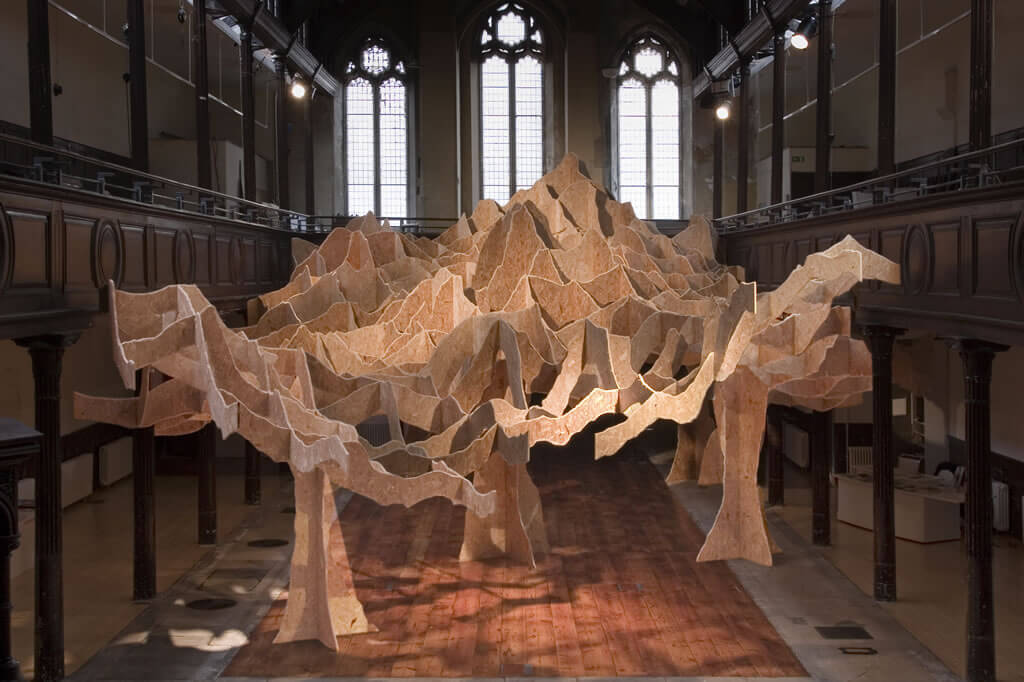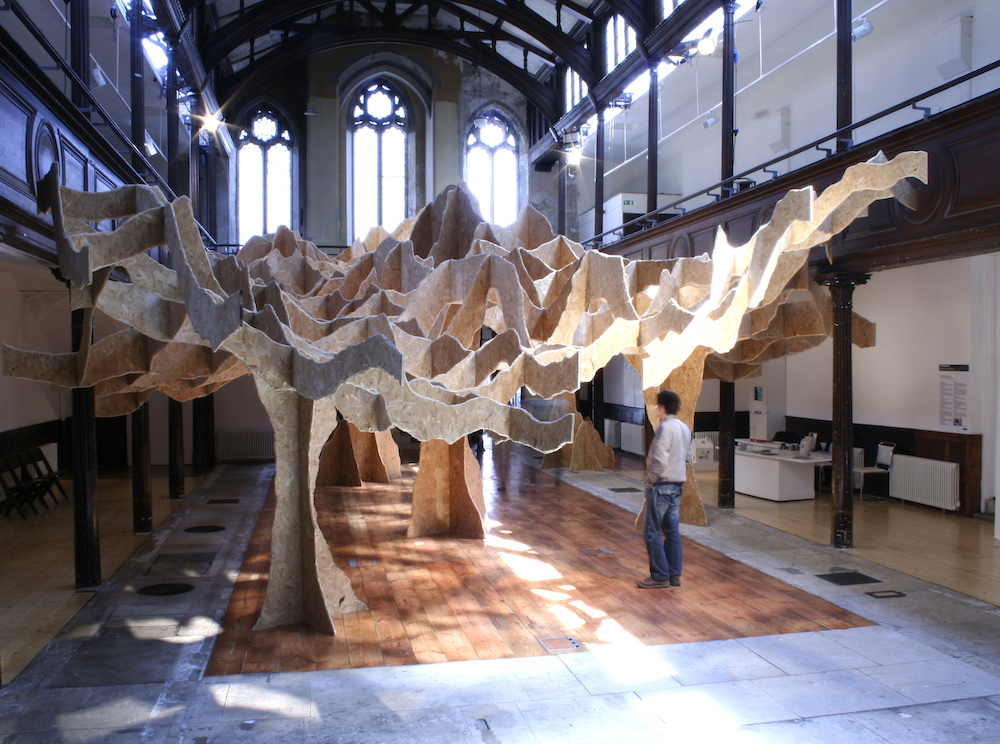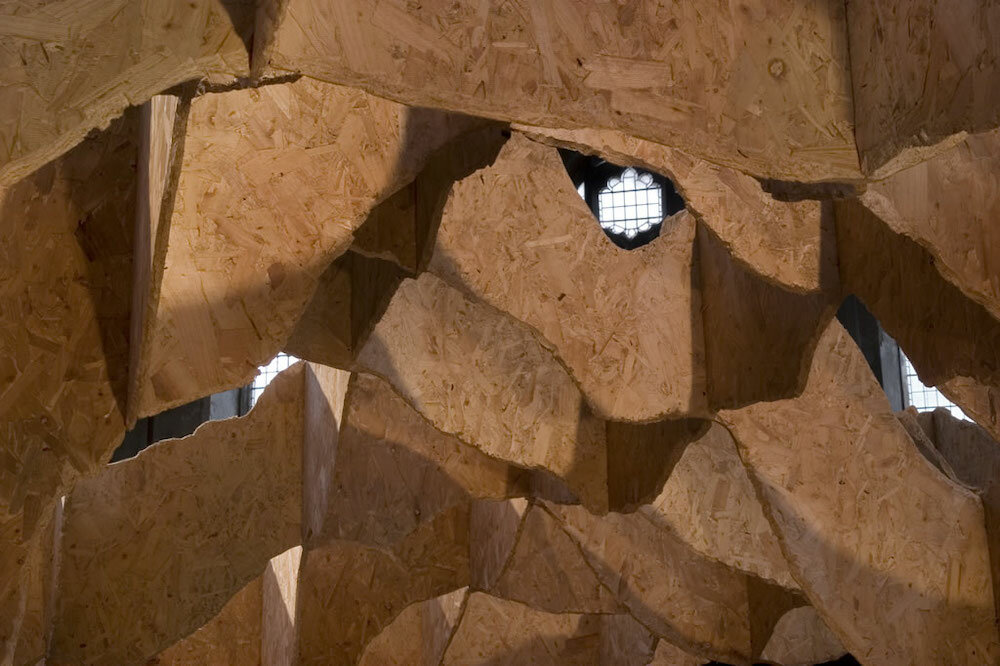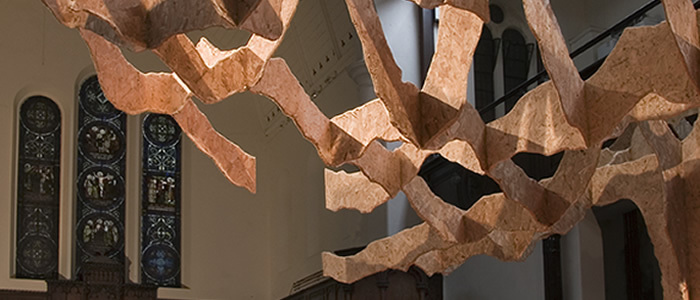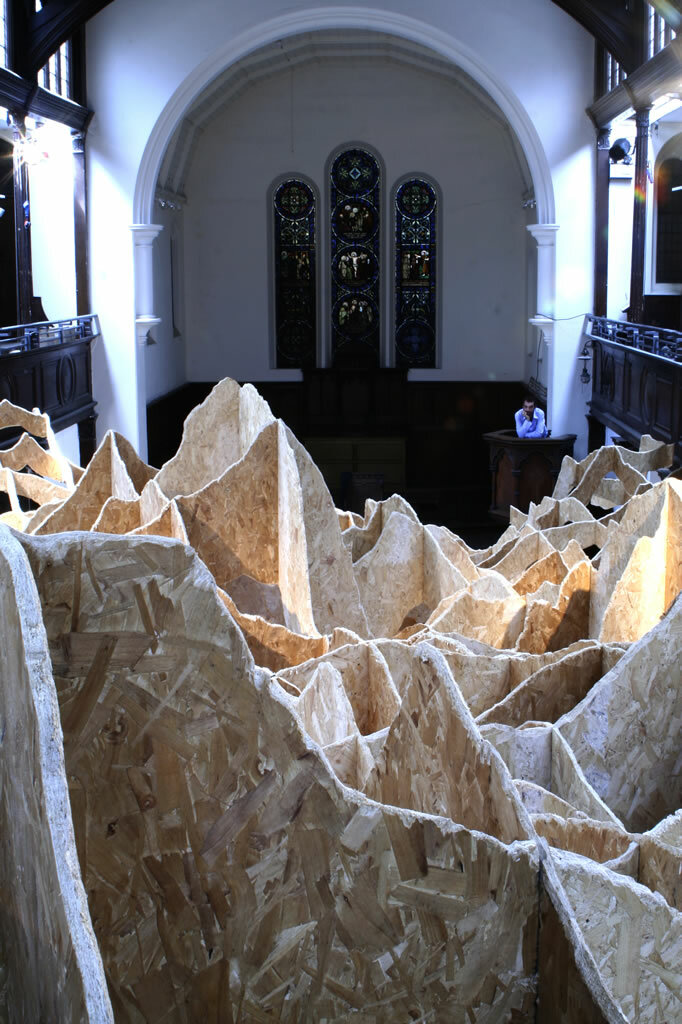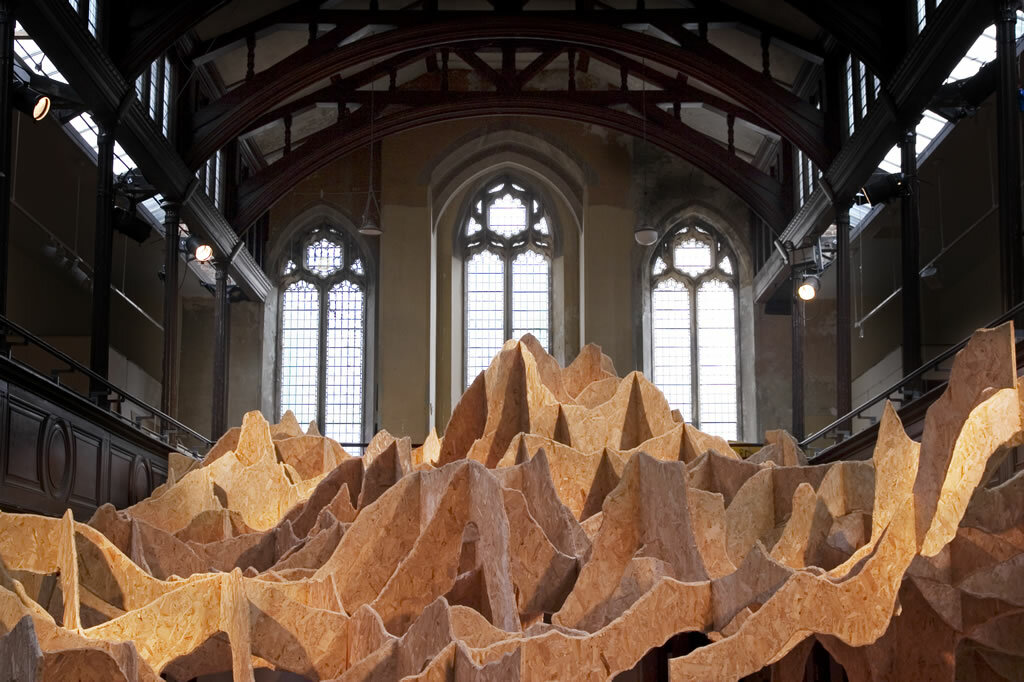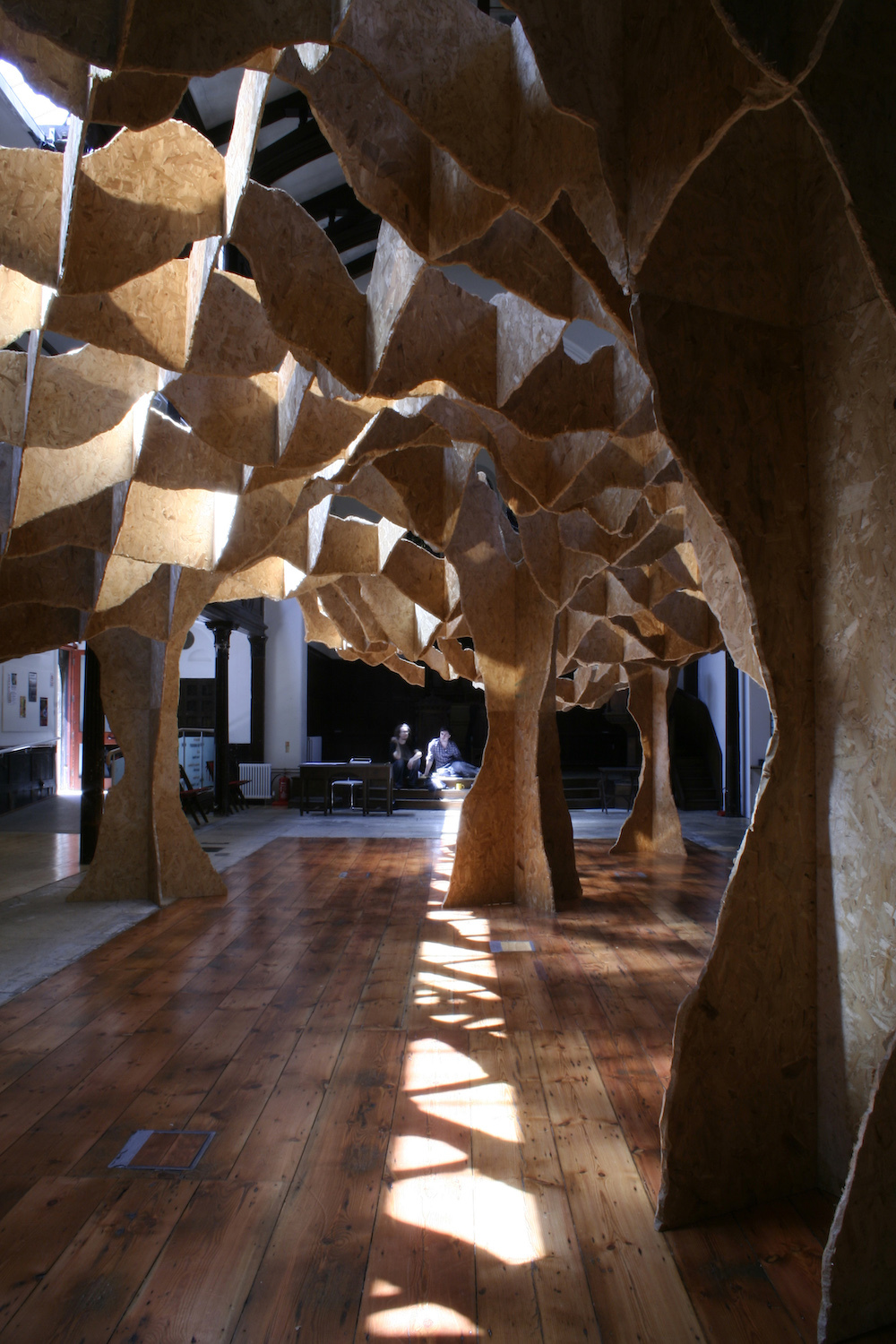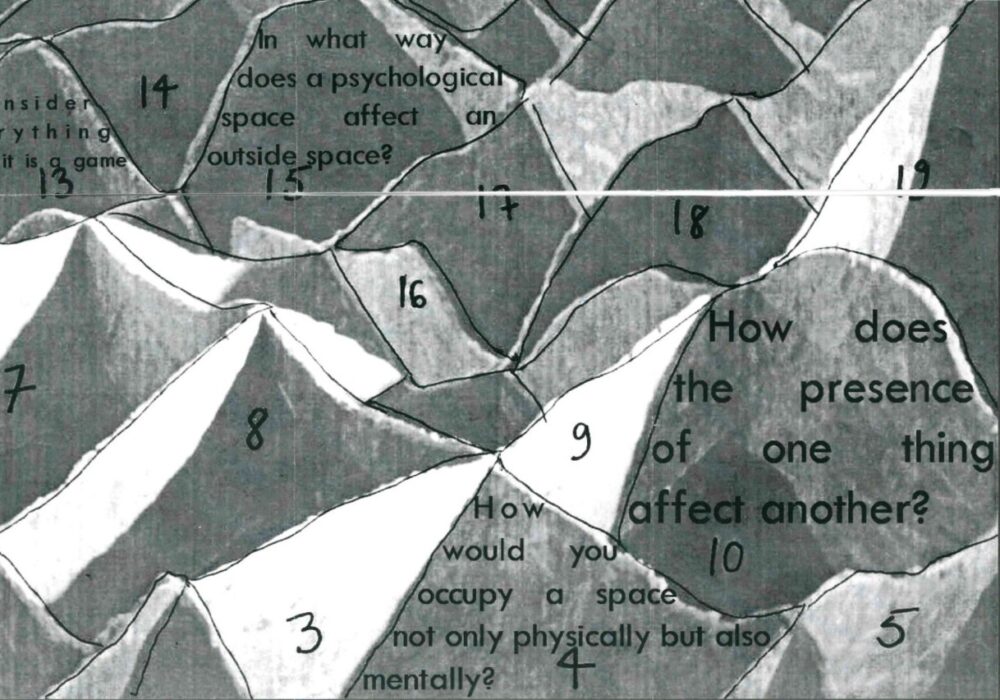The Undercroft
Vincent Mauger
At first sight, the form of The Undercroft appeared to be dictated by a mathematical accuracy synonymous with computer-aided design. However, closer inspection revealed an artisan’s pride in carefully crafted detail and creative treatment of everyday materials gleaned from DIY stores. As a result, Mauger’s assemblages lie across the rather wayward creative path that starts with William Morris’s Arts and Craft movement and ends in the fanatic excesses of an obsessive hobbyist.
Vincent Mauger had his work shown by several European galleries including Code/Buro in Brussels, gallerie LH Paris, MCNN in Nevers and at the Loire regional FRAC in Nantes. The Undercroft was his first solo exhibition in Britain.
The Undercroft
The Undercroft was constructed largely from sheets of Orientated Strand Board (OSB), a material most commonly used as freight packaging or as emergency boarding for derelict shop windows. From this base material Vincent created a magical blend of fractal landscape and architectural folly, a temporary pavilion that seemed to have burst forth from the ground below.
Originally, Undercroft was the Old English word to describe the arched vaults that lay underneath medieval buildings. Churches, castles, and large houses would use them as burial chambers, kitchens or as convenient storerooms. Today the term has been rediscovered by architects designing underground car parks and the shopping facilities that mushroom beneath many major building developments.
About The Artist
Vincent Mauger, a prolific sculptor, employs many different forms and materials in the course of his artistic enquiry. His work has included delicate, beautifully crafted objects that are cut from plywood, simple video sculptures sown on monitors, spider webs that fill a gallery with luggage straps, and exquisite, large scale environments that overflow buildings with DIY materials. Though the medium may change, the common thread that links all of Mauger’s work is his continued attention to one point; how to create the impression of space and depth, whilst testing how we, the viewer, perceive that illusion.
Of his work Vincent says:
"It deals with the sculptural representation of a memory or a mental perception of a space or an object. I seek to establish a creative tension between the real object and my attempt to materialise a personal perception associated with it.
My approach has increasingly become concerned with the notion of space. I am interested in occupied space not only as architecture and volume, physically and mathematically, but also how an individual’s senses react to it. I convey, in a heightened way, some sensations, impressions or reveries associated with places, in an attempt to investigate their reality. Therefore, it seems logical to me to use tools whose role is to provide images of objects or structures before they are brought to completion (the notion of scale modelling has always underlain my practice) or to create purely virtual universes (the idea of space thought out without any actual materialisation, like an echo of a mental vision, is another essential element of my investigation)."
